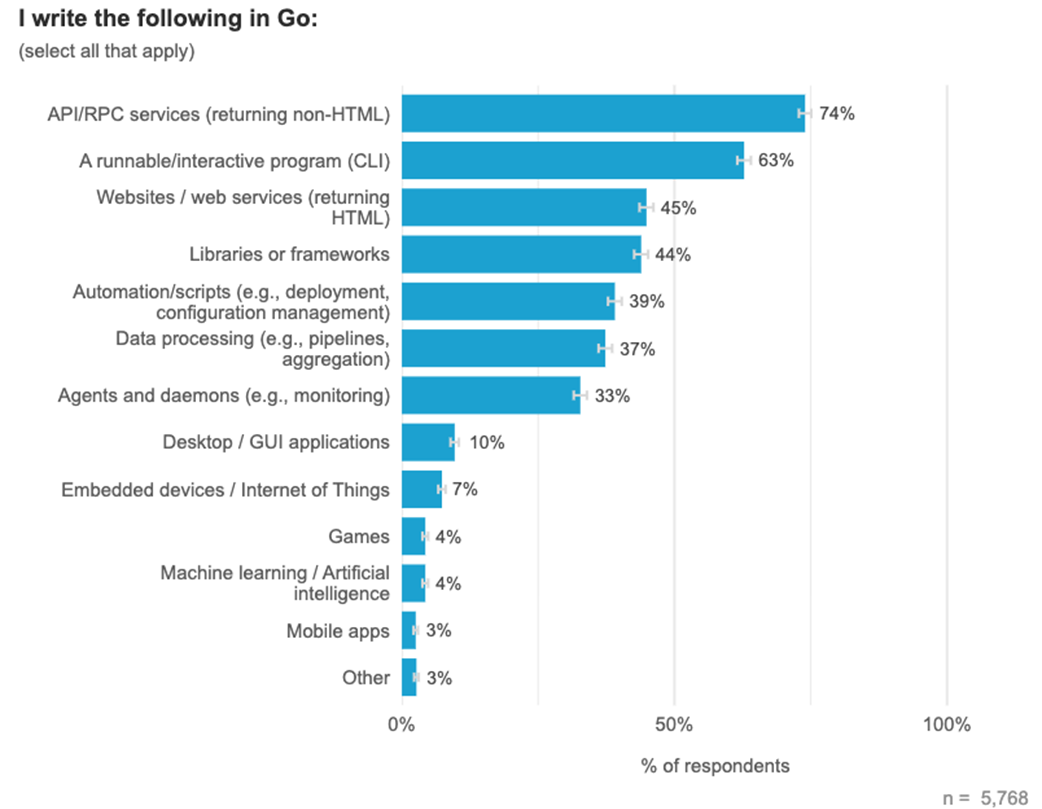1 Meet Go
This chapter introduces Go as a modern, pragmatic language created to tackle real-world engineering challenges such as slow builds, dependency sprawl, and code complexity. Centered on simplicity, Go pairs a small, learnable core with powerful built-in tooling for formatting, testing, benchmarking, documentation, profiling, and more. The book’s approach is hands-on: you’ll learn Go through a series of compact, real-world projects that emphasize clean, maintainable code and practical workflows across backend and cloud scenarios, culminating with an exploration of TinyGo for embedded systems.
Go’s strengths include readable, maintainable syntax, fast compilation, a robust standard library, and lightweight concurrency via goroutines and channels, enabling high-scale services. Its design favors composition and implicit interfaces over inheritance, generics reduce boilerplate while preserving clarity, and “errors as values” encourages explicit, reliable control flow. Go is widely used for APIs, CLIs, and cloud services, benefits from an active open-source community, and offers strong career prospects. It isn’t ideal where precise manual memory control, shared-library distribution, or tiny binaries are paramount (though TinyGo helps); its garbage collector and naming quirks can also be constraints in certain domains.
The chapter also explains why “pocket-sized” projects are effective: they fit busy schedules while teaching industry-grade practices. You’ll progress from core grammar and idioms to production-minded topics—testing in every chapter, benchmarking for performance regression checks, and fuzzing for robustness. Along the way, you’ll apply clean code organization, domain-driven design, visibility decisions, and architectural choices, building services over HTTP and gRPC, adding logging, API integration layers, and simple caching. Optional sidequests deepen learning and encourage experimentation, preparing you to design, test, and deploy reliable Go services with confidence.
Extract from the Go Developer Survey 2024 H1 Results

Summary
- Go is a modern, industry-oriented, simple and versatile language, best for backend development, widely used for cloud-oriented tools, great for CLI and even adapted to embedded systems.
- Its simplicity and design philosophy make it easy to learn, enabling teams to quickly become productive while maintaining readable, maintainable codebases.
- Go’s built-in tools for testing, benchmarking, and profiling streamline development and ensure high-quality software.
- Its lightweight concurrency model, powered by goroutines and channels, makes it an excellent choice for scalable and concurrent applications.
- The language’s growing community and increasing adoption across industries make learning Go a valuable career investment.
- This book takes a hands-on approach with pocket-sized projects designed to teach Go’s features step by step, from basic syntax to cloud-ready applications.
FAQ
What problems was Go created to solve?
Go was designed at Google to address real-world engineering pain: slow builds, dependency hell, code complexity, and cross-language build friction. It targets productivity on multicore, networked systems with a simple language, fast compiler, and opinionated tooling.What is Go’s design philosophy and how hard is it to learn?
Go prioritizes simplicity and clarity. With a small set of keywords (about 25 as of 2024), standardized formatting, and clear conventions, most developers ramp up quickly and spend more time solving problems than wrestling with language features.How does Go handle concurrency?
Go uses goroutines (lightweight, runtime-scheduled units of work) and channels for communication. Goroutines start with tiny, resizable stacks, letting you run hundreds of thousands in one process—far lighter than OS threads for many workloads.How is error handling in Go different from other languages?
Go treats errors as values rather than using exceptions. This encourages explicit, local handling of failure paths and tends to produce predictable, maintainable control flow.What tools come built into Go?
The toolchain includes fast compilation, dependency management, code formatting, static analysis, documentation generation, testing, benchmarking, fuzzing, profiling, a language server, and runtime tracing. You can build, test, and analyze code with consistent, standard tools.What did generics (Go 1.18+) bring to the language?
Generics enable reusable, type-safe functions and data structures without repetitive boilerplate (for example, working over slices or maps of different element types). The community continues to refine idioms that add power without sacrificing Go’s simplicity.Is Go object-oriented?
Go isn’t class-based and has no inheritance, but it supports composition and interfaces. Interfaces are implicit—if a type implements the required methods, it satisfies the interface—making decoupling, mocking, and dependency injection straightforward.Where does Go shine in practice?
Go is especially strong for backend services, APIs/RPC, CLIs, and cloud-native systems. Its concurrency model, fast builds, and batteries-included tooling make it ideal for scalable, maintainable services. Many major cloud platforms and tools (e.g., Kubernetes, Docker) embrace Go.When might Go not be the best choice?
- When you need precise, manual memory control (use C/C++ or similar).- When building OS kernels or systems requiring tightly controlled GC behavior.
- When you need tiny binaries by default (consider TinyGo for constrained targets).
- When distributing binary libraries instead of source (Go primarily ships static executables).
- Minor: searching “Go” online is noisy—use “golang” in queries.
 Learn Go with Pocket-Sized Projects ebook for free
Learn Go with Pocket-Sized Projects ebook for free